Working outdoors has its fair share of perks, but when it comes to cold weather conditions, working outside can become uncomfortable and dangerous. These conditions pose a great risk to industries who primarily work outdoors, like construction workers, farmers and first responders. According to the most recent study by the U.S Bureau of Labor Statistics, over 20,000 ice, sleet and snow-related injuries were reported in 2017.
Extreme cold weather conditions can cause workers to experience cold stress, which affects internal body temperature and can lead to serious injuries. When air temperatures drop below normal, your body releases heat faster, causing physical stress. Aside from that, our bodies use extra energy to try to keep ourselves warm, which can cause extreme fatigue.
While there are great risks associated with working in cold weather, there are plenty of precautions you can take that will ensure your health is protected. Check out the guide we created that highlights types of cold stress, signs to look out for and important safety tips when working in cold weather conditions — or jump straight to the infographic below.
Types of Cold Stress
There are three main cold-related illnesses and injuries that outdoor workers should look out for: hypothermia, frostbite and trench foot.
Hypothermia
Hypothermia occurs when your body temperature drops below 95 degrees Fahrenheit, causing your body to lose heat faster than it produces it. If your body becomes exposed to cold environments for a long period, you’re more likely to develop hypothermia gradually.
Common symptoms of hypothermia:
- Shivering
- Confusion and brain fog
- Slow breathing
- Low energy and fatigue
- Bright red skin
- Slurred speech
- Loss of coordination
Frostbite
Frostbite is an injury that happens when the skin on your body and underlying tissues begin to freeze. Frostbite usually occurs when the skin is exposed to cold and windy weather or when the skin comes in contact with cold surfaces and objects.
Common symptoms of frostbite:
- Numbness
- Red skin with gray, white or bluish patches
- Hardened skin
- Blistering after being warmed
Trench Foot
Trench foot, also known as immersion foot, occurs when the foot is exposed to cold and wet temperatures for an extended period of time. This can happen if a person is not wearing the proper footwear when in cold and wet environments. Your foot can start to lose nerve function and blood flow, making you more susceptible to this kind of injury.
Common symptoms of trench foot:
- Swelling
- Numbness
- Cold, blotchy and red skin
- Heavy feeling in the foot
- Itching sensation
- Blistering
Tips for Working Safely in Cold Weather Backed by Science
To ensure you’re prepared for working in cold weather, follow the safety tips below:
1. Dress in Silk, Wool or Synthetic Clothing
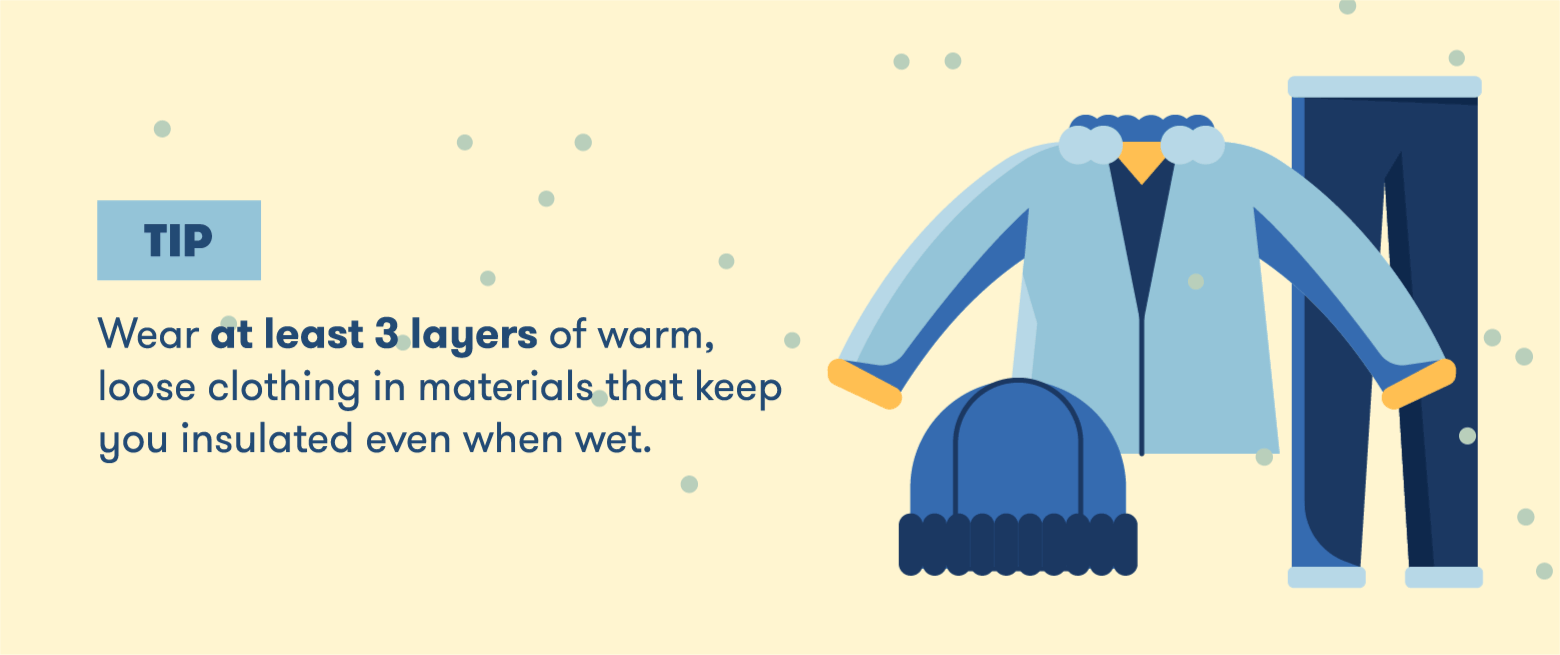
Protecting your body by dressing appropriately for cold weather is extremely important to prevent injuries caused by cold stress. Layering is key when dressing for cold weather as it keeps you warm and insulated.
When working outdoors, moisture caused by sweat, rain or snow can increase your chances of cold stress. The Occupational Safety and Health Administration (OSHA) says wool, silk and synthetic clothing fabrics are best when working in cold conditions since they can stay well insulated even when they become damp or wet. Avoid cotton materials as they lose their insulating properties when wet.
It is recommended to wear at least three layers of warm, loose clothing when working in extremely cold environments. Make sure the layers aren’t too restrictive and provide enough ventilation, as tight clothing can reduce blood flow and circulation.
2. Protect Most Susceptible Body Parts
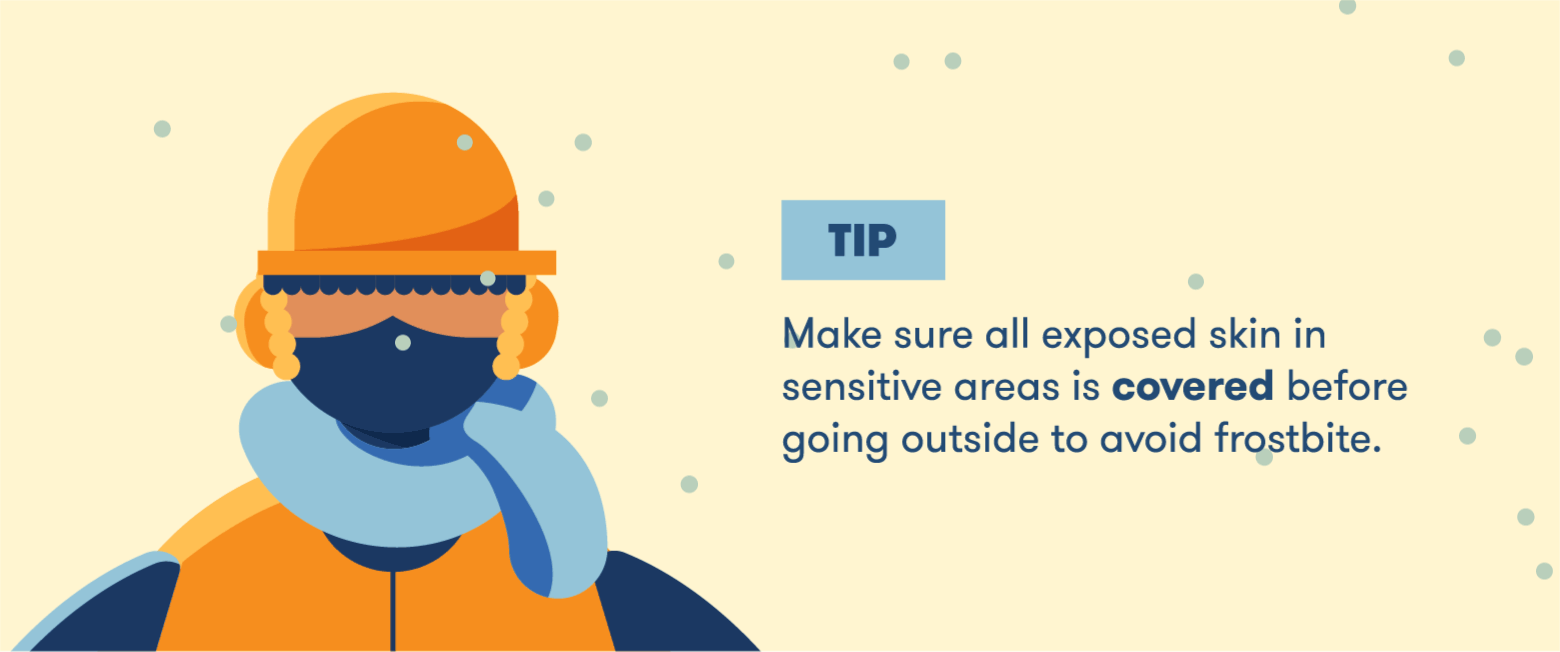
When keeping yourself warm, it’s important to not forget about sensitive areas that are most susceptible to cold stresses like frostbite. Many people tend to forget to protect these areas, but according to the Centers for Disease Control and Prevention(CDC), frostbite most often affects the nose, ears, fingers, cheeks and toes.
Frostbite can occur in less than 30 minutes when the skin is exposed to cold temperatures. The NWS Wind Chill Temperature(WCT) index uses science to give an accurate calculation of the dangers of wind chill. Wind chill is the temperature humans feel based on the air temperature and wind speeds.
This index is based on the human face model and uses the heat transfer theory to determine the amount of heat loss the body encounters during cold and windy days. For example, if the temperature is at 0º F with wind speeds at 20 MPH, the wind chill is -22º F. So, the windier it is, the colder it feels on our skin.
Before going out, make sure all exposed skin is covered as it can quickly freeze.
3. Stay as Dry as Possible
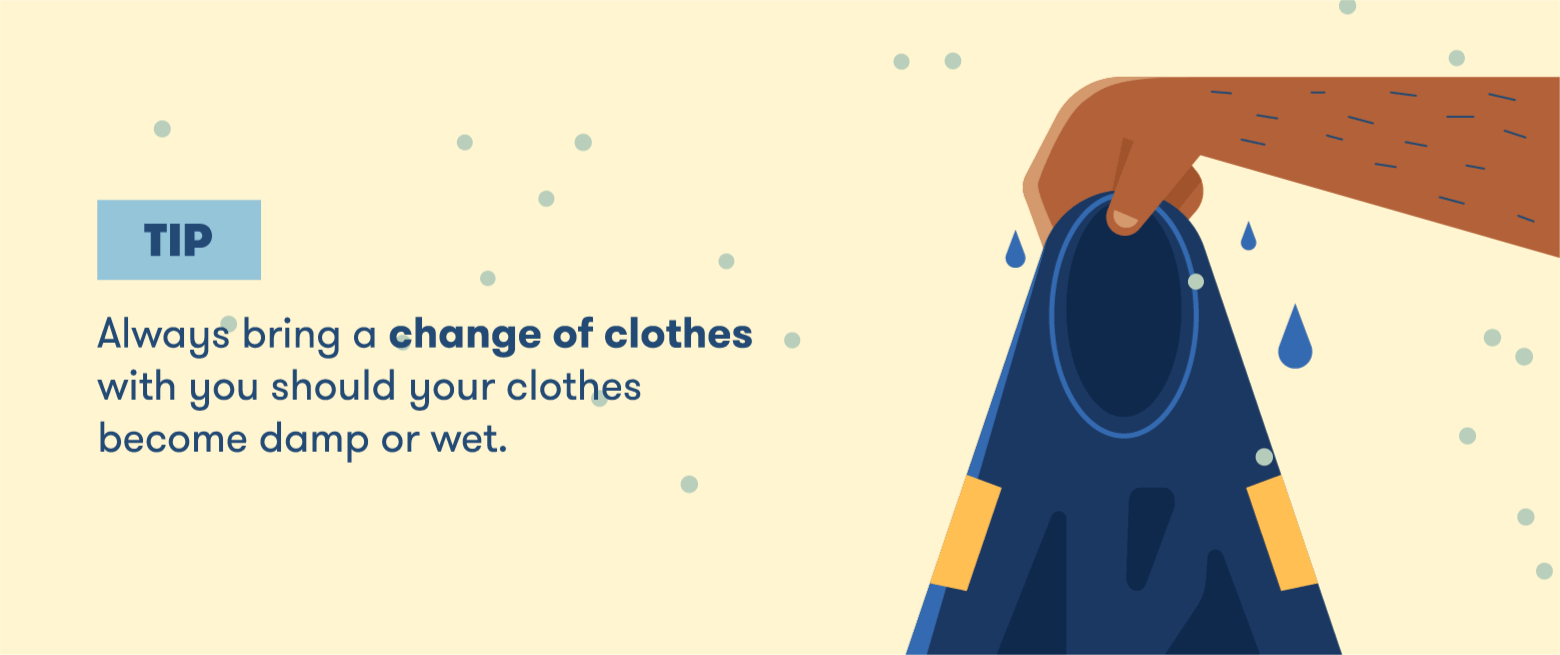
Damp or wet clothing can cause your body temperature to drop quickly, putting you at greater risk of illness and injury. Water actually pulls heat away from the body 25 times faster than air because of its density. Sweating is the body’s way of keeping you cool and keeping excess heat away, but in cold weather, you want to keep your body as warm as possible. Though physical activity helps keep body temperature warm, research shows wet clothing increases heat loss through conduction and evaporation.
Should your clothes become wet or damp, you should change them immediately. The National Institute for Occupational Safety and Health (NIOSH) recommends carrying cold weather gear such as extra clothing, socks, gloves, hats and jackets when working in cold environments. Putting on multiple layers of moisture-wicking clothing helps the heat in your body stay regulated.
4. Drink Warm, Sweet Beverages
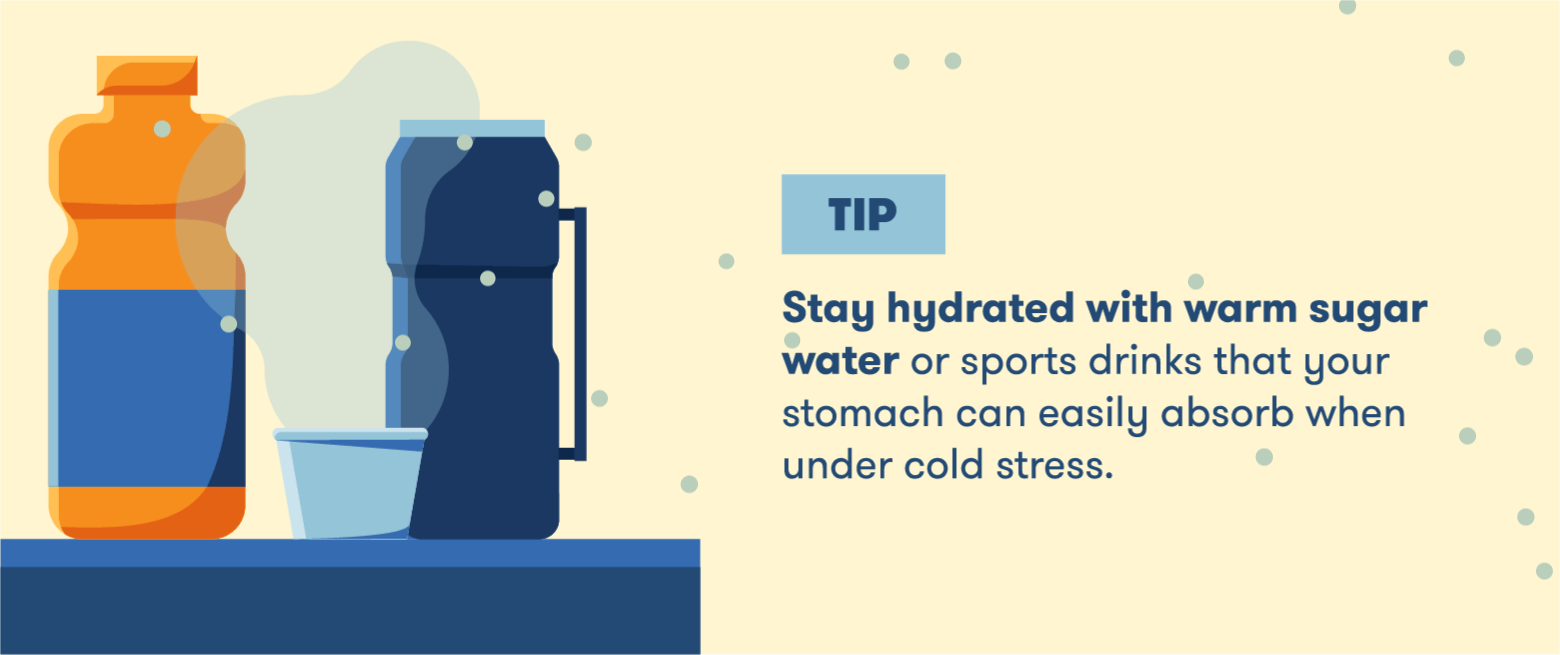
When we think of dehydration, the effects of hot weather conditions usually come to mind, but becoming dehydrated in cold weather is just as easy. In fact, dehydration can happen faster when in cold temperatures because the body is using more energy to try and keep itself warm.
When we are cold, warm beverages can help increase our body temperature — sugar water or sports drinks with electrolytes are best when working in these conditions. According to an article written by Rick Curtis, the director of the Outdoor Action Program at Princeton University, when the body starts to shut down due to cold stress, it becomes harder to digest food, but the stomach can still absorb water and sugars.
Though you should never be drinking on the job in the first place, it’s important not to drink alcohol when in cold weather, as it causes your body to lose heat at a faster rate. The same goes for caffeinated drinks like coffee and tea. Though it may seem like a good idea to drink these warm beverages, caffeine causes the body to produce more urine, increasing the chances of dehydration.
5. Know the Danger Signs
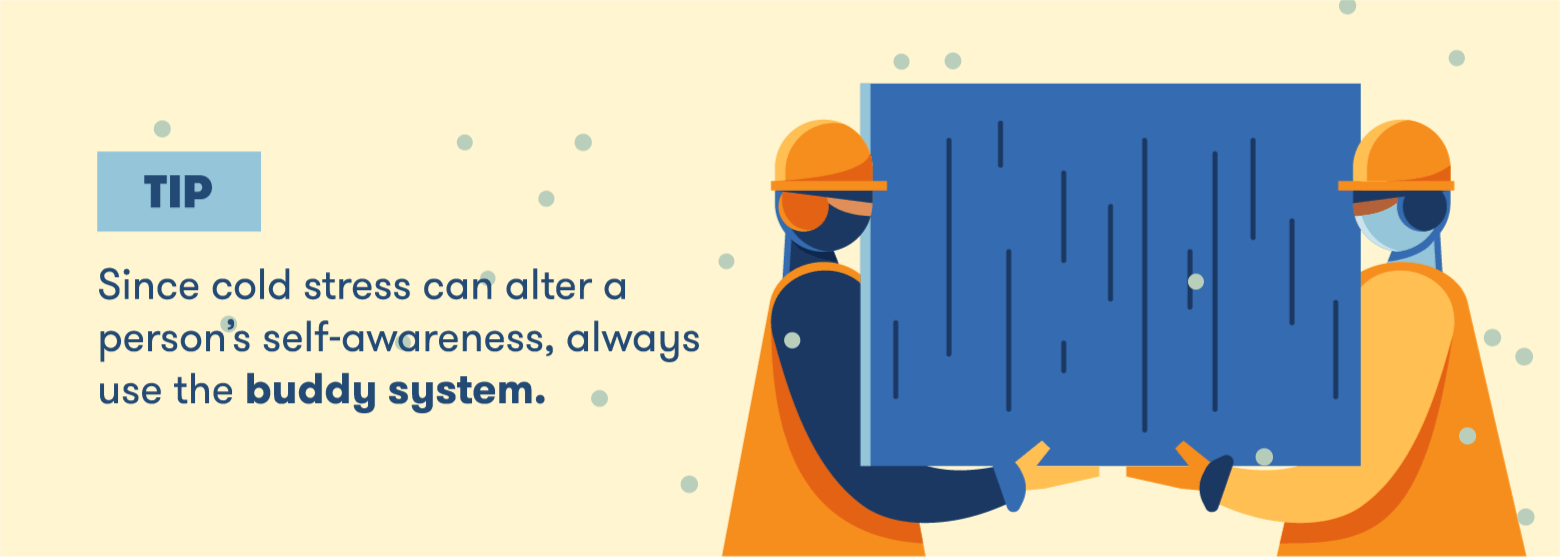
OSHA recommends working in pairs so that you and your coworkers can monitor each other’s symptoms and physical conditions. It’s important to know exactly what cold stress danger signs to look out for in order to know what to do to help.
According to the CDC, people affected by cold stress, such as hypothermia, are usually unaware of their conditions since the symptoms come on gradually. Confusion and brain fog are common symptoms that can hinder a person’s self-awareness. Communicate and check-in with other team members often to look for any warning signs such as loss of coordination or inability to think clearly.
6. Avoid Skin Contact with Cold Metal Surfaces

You’ve likely seen a kid getting their tongue stuck to a metal pole, like in the classic movie A Christmas Story. While you likely aren’t going around licking poles, touching any metal surface with your skin can be harmful. Metals are good heat conductors, so when you touch a metal object, the heat from your body transfers rapidly to the metal object. The metal transfers the heat faster than your body can produce it, which can cause a burn.
So, when an object is below normal temperatures, as it may be in cold weather, it causes a cold burn, otherwise known as frostbite. When your skin comes in contact with metal surfaces, the moisture in your skin can freeze to the metal.
If this happens and you try to remove yourself from the metal object, it can cause the skin to rip and become damaged. Do not tug or pull your body away, instead gently pour warm water over the surface until you become unstuck.
7. Take a 10-minute Warm Up Break Every 2 Hours

Breaks are necessary for any working environment but become increasingly crucial when working in extremely cold conditions. The American Conference of Governmental Industrial Hygienists (ACGIH) created a work/warm-up schedule that gives recommendations on how to schedule work breaks given air temperature and wind speeds. This chart helps employers determine the appropriate amount of time employees can safely work in cold conditions.
Based on a four-hour work period, this schedule says that breaks of 10 minutes should be taken once every two hours, with the second break after the four-hour period being an extended lunch break. As wind chill increases, the amount of breaks needed will increase. Employers can input air temperature and wind speed to determine wind chill using the NWS Wind Chill Calculator.
These breaks are needed to help warm your body and minimize the risk of cold-related illnesses and injuries. Wind chill temperatures are only for air temperatures at or below 50º F with wind speeds of three MPH and above.
When working in cold conditions, it’s important to know the signs and symptoms of cold stress. The Occupational Safety and Health Act (OSHA Act) states that employers are responsible for providing safe work environments free of hazards, such as cold stress. Training and education should be provided so workers can follow safe work practices to protect their health.
Read on to learn how to stay safe while working in the cold.
